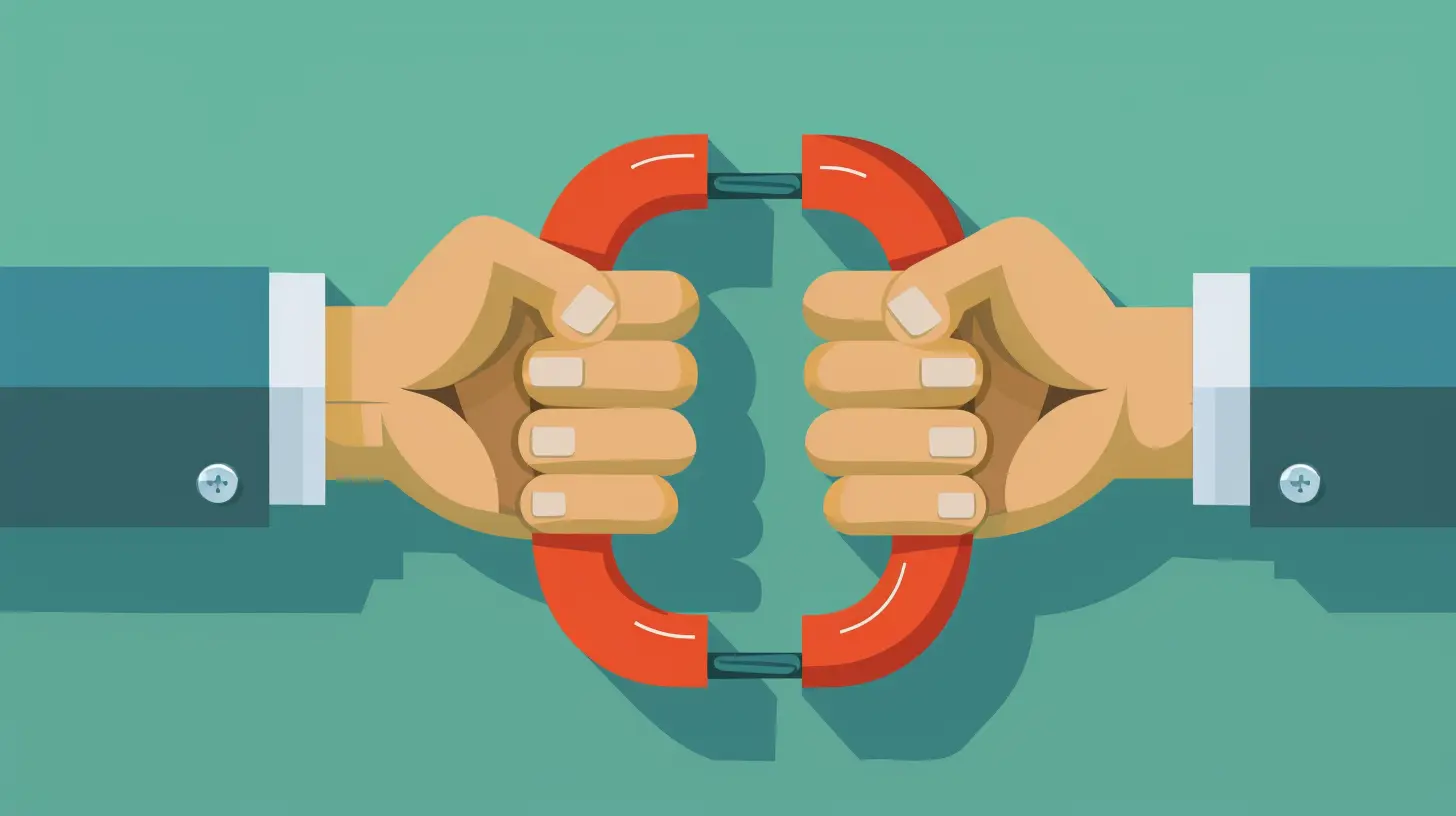Closing the Feedback Loop: Following Up with Customers Effectively
11 July 2025
Have you ever poured your heart into a beautifully crafted customer survey or asked for feedback on your service, only for that voice to echo into the abyss? It's like whispering into the wind and hoping it answers back. But here’s the thing—when your customers speak, they're gifting you insight. And the real magic? It happens when you respond.
Let’s talk about feedback. Not just gathering it and filing it into fancy folders, but going full circle—responding, following up, and showing your customers that their voice isn’t floating in limbo.
Welcome to the art of closing the feedback loop.
The Feedback Loop: More Than a Buzzword
Let’s break it down. A feedback loop isn't just a trendy term tossed around in business meetings. It’s a cycle, a rhythm, a dance between you and your customers. Here's the basic beat:1. Ask for feedback.
2. Receive and analyze it.
3. Respond.
4. Act on it.
5. Follow up.
But sadly, step number five is often the wallflower—overlooked, underused, taken for granted. And that's a shame because that final step? That’s where trust blooms.
Why Closing the Feedback Loop Matters
Let’s be blunt—collecting feedback without follow-up is like asking someone how their day went, then walking away mid-sentence. It leaves people feeling unheard. And in the business world, that’s dangerous territory.When you close the loop, you:
- Build stronger relationships: You're telling your customers, "Hey, your opinion matters—and we're listening."
- Boost loyalty: When customers see action, they’re more likely to stick around.
- Improve retention: Happy customers stay. Unheard customers drift.
- Gather better insights: If customers see you taking action, they’ll give more honest, useful input next time.
It’s not just good manners—it’s good business.
The Psychology of Being Heard
Let’s get a little philosophical.Have you ever had a moment where someone truly listened to you? Like, really heard you? It feels powerful, right?
Now imagine giving that same feeling to your customers every single time they share feedback. When people feel heard, they feel valued. And when they feel valued, they stick with you—even through bumps in the road.
Closing the feedback loop is like saying, “We see you. We hear you. We're growing because of you.”
The Common Pitfalls of Incomplete Loops
Before we jump into how to close the loop like a pro, let’s highlight a few stumbling blocks companies often hit:1. The Black Hole Syndrome
You gather feedback... and that's where it ends. Customers never hear from you again. Result? They assume you didn't care.2. Delayed Response
Weeks pass. Feedback is already outdated. When you finally respond, the moment has long expired. It’s like replying ‘thanks’ to a birthday wish in December when your birthday was in June.3. Generic Replies
Nothing screams “robot” like a canned, generic thank-you response. Your customers are humans. Talk to them like you mean it.Mastering the Art of Following Up With Customers
Let’s flip the script. Here’s how to actually close that feedback loop and do it with finesse.1. Acknowledge Instantly
Speed is key. Even if you don’t have a full solution yet, acknowledge their feedback right away.Say this:
“Thanks for your thoughts, Alex! We're looking into this.”
Not this:
...radio silence...
A quick message shows you’re on it.
2. Personalize Your Response
Use their name. Reference what they said. Speak like a human, not a corporate drone. And please, ditch the script.Example:
“Hi Sara, thanks for bringing up the difficulty with the checkout process. We’re testing a new layout to make it smoother and would love your thoughts once it’s live.”
Boom. You’ve made a connection.
3. Show Your Work
Think of it like a math problem back in school—don't just show the answer; show how you got there.Did they suggest improving your app’s usability? Mention the changes you’re testing. Did they complain about late deliveries? Talk about the logistics update you're implementing. You don’t need to open the whole curtain, but give them a sneak peek.
4. Invite Them Back
Once you’ve made changes based on their input, invite them to test it out. Let them be part of the process.Try this:
“We’ve updated the dashboard based on your feedback. Would you be open to trying it out and letting us know what you think?”
You’re transforming critics into collaborators.
5. Keep the Loop as a Habit
Don't close the loop once and call it a day. Make it a habit, integrate it into your workflow, and build systems around it. Automate where it helps, but never automate empathy.Tools That Help You Keep the Loop Alive
You don’t need a crystal ball to keep track of feedback. Here are some tools that can help:- Zendesk – Tag and respond to customer tickets with feedback loops in mind.
- Typeform + Zapier – Automate follow-ups after feedback form submissions.
- Intercom – Offers in-chat feedback and personalized replies.
- Trello or Asana – Track feedback action items like any other task.
The key? Make sure someone owns the feedback loop. Or else, it’s just another lost email.
Turning Negative Feedback into Gold
Nobody likes criticism. But every “complaint” is a hidden opportunity.When someone says, “Your app is glitchy,” don’t take it personally. Instead, hear: “I care enough to tell you what’s wrong.”
Respond with curiosity, not defensiveness. And when you fix it? Follow up and thank them. You just turned a critic into a fan.
Remember: The best loyalists are often former critics whose concerns were addressed.
Customer Follow-Up Templates That Actually Work
Here are a few real-talk templates you can tweak, steal, or be inspired by:🔹 Immediate Acknowledgment
> “Hey [Name],Thanks so much for your feedback on [specific topic]. We’re reviewing it and will get back to you soon. This helps us grow and serve you better.”
🔹 After Implementing Change
> “Hi [Name],We took your feedback about [topic] to heart and made some updates! Would love for you to check it out and let us know what you think.”
🔹 Ask for Continued Input
> “Hey [Name],Your insights were super valuable last time. Got five minutes to share your thoughts on our latest update? You helped shape it!”
Short. Simple. Impactful.
Let Feedback Shape Your Story
Your business isn’t a solo act. It’s a choir—and your customers are singing too. When you really listen and respond, the harmony is unbeatable.Closing the feedback loop isn’t just strategy. It’s culture. It’s care. It’s the heartbeat of customer experience. So, let the loop lead the dance. Let it guide your next move. Because when customers speak, they deserve more than a mic—they deserve a response.
And when we follow up consistently and personally, we don’t just collect feedback. We create community.
Final Thoughts
In a world flooded with surveys, star ratings, and online reviews, the businesses that stand out aren’t the ones that collect the most feedback—they're the ones that respond to it.Feedback isn’t the end of the conversation—it’s the beginning of a relationship. And closing the loop? That’s how you keep love alive.
So the next time a customer gives you a piece of their mind, don’t let it gather dust. Pick it up, polish it, respond, and return with something better.
Because when you close the loop, you open up new possibilities.
all images in this post were generated using AI tools
Category:
Customer ServiceAuthor:

Lily Pacheco
Discussion
rate this article
1 comments
Cash Mullen
This article sheds light on the vital importance of closing the feedback loop. It's a reminder that effective follow-up not only strengthens customer relationships but also drives business improvement. Thoughtful engagement can truly enhance loyalty.
July 21, 2025 at 5:03 AM

Lily Pacheco
Thank you for your insightful comment! I completely agree—closing the feedback loop is essential for fostering strong customer relationships and driving continuous improvement. Your engagement is key to enhancing loyalty!


